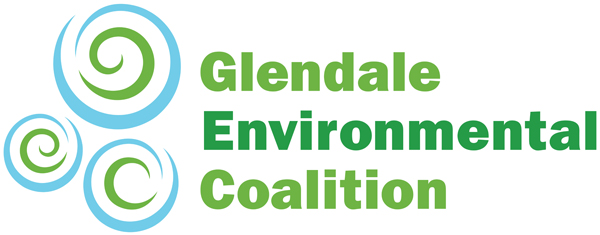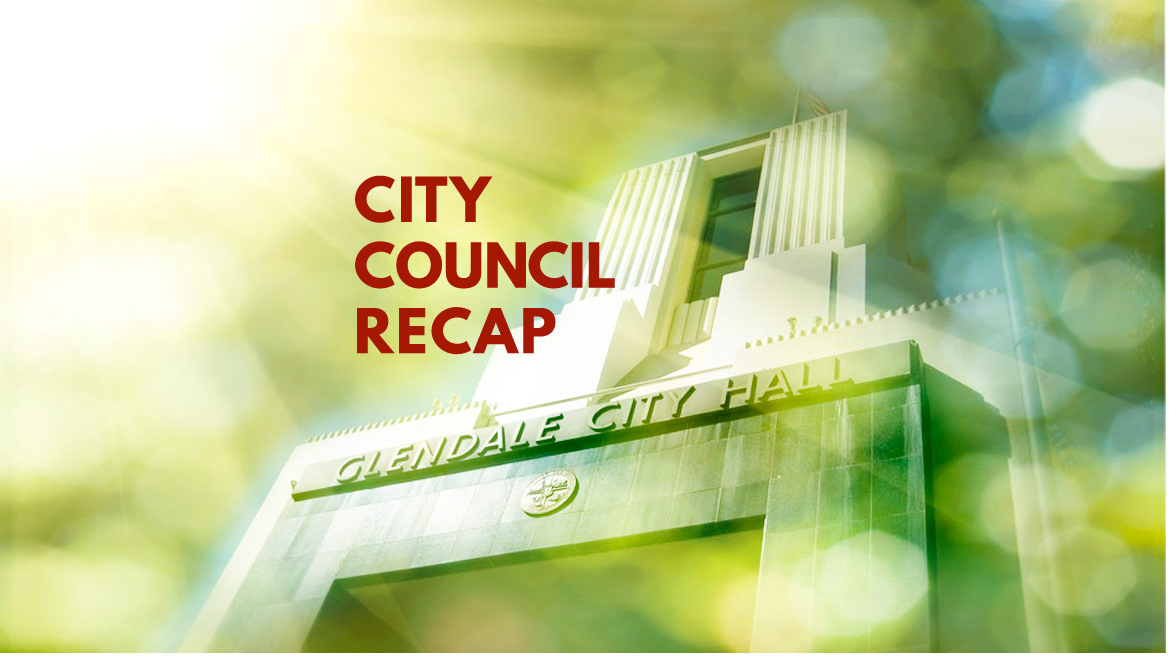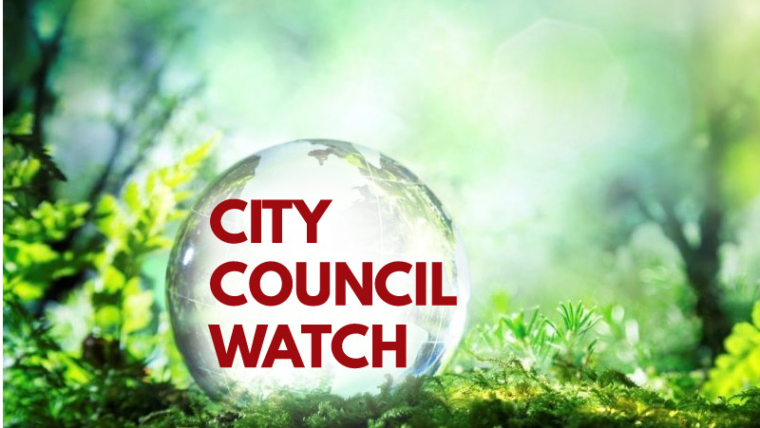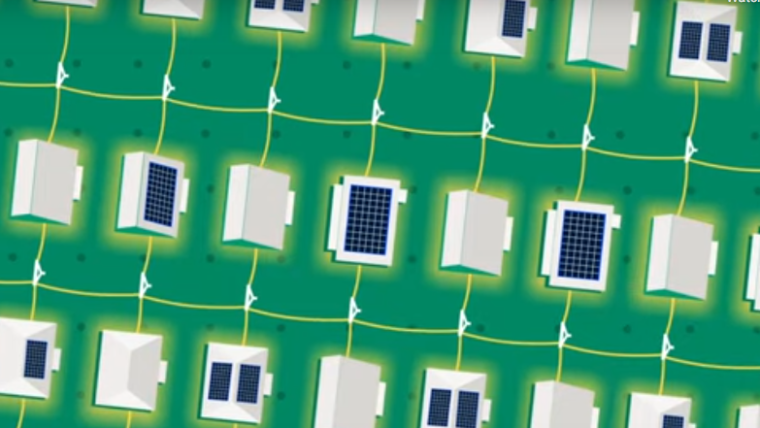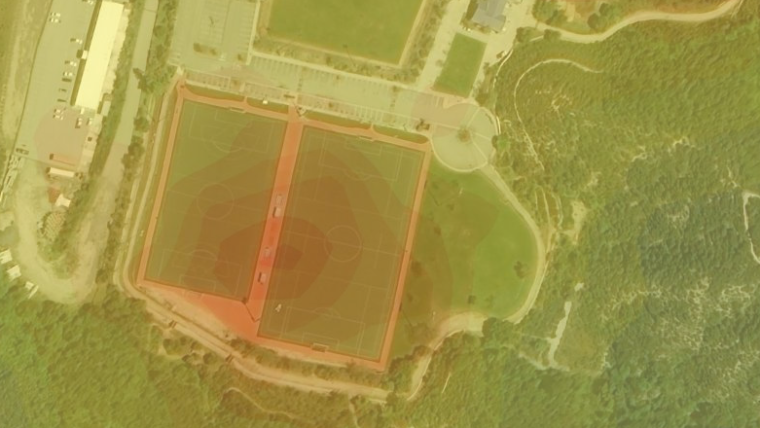CITY COUNCIL RECAP
Glendale City Council Meeting, 6PM, October 13, 2020
Full Agenda / Full Meeting Video
EXCERPTS (Eco-related Items only)
We are very excited to update you regarding this particular Glendale City Council meeting. The outcome of this meeting presented a real victory for our city’s clean energy future, and we want to thank all of you who emailed and called in to support the programs! GWP presented an update on the city’s first three local clean energy projects and asked Council to approve motions to allow each of the projects to proceed. By unanimous vote, all three projects will move forward! After the contracts are negotiated and finalized, the Clean Energy programs are expected to launch in early 2021! Read below for more details on these exciting programs.
GEC wishes to thank our council members—Mayor Agajanian, Dan Brotman, Paula Devine, Ardy Kassakhian, and Ara Najarian—for their support, and city staff for all their hard work. We also want to acknowledge and thank the GEC community that inspired this to happen!
This week also marks a historic Sale of Mylar Balloons Ban, making Glendale only the third city in the State of California to enact a balloon ban.
Now let’s dive in!
Council Comments – EV’s, Traffic Safety, Charging Infrastructure:
Councilmember Brotman offered an update from a recent Southern California Association of Governments (SCAG) meeting, where he sits on the “Energy & Environment” committee as the Glendale representative. He talked about the Zero Traffic Fatalities Task Force, established via Laura Friedman’s Bill AB2363. The goal of the Task Force is to “develop a structured, coordinated process for early engagement of all parties to develop policies to reduce traffic fatalities to zero.” Brotman highlighted that addressing speeding and eliminating traffic fatalities is a priority for the city. Brotman would like to have the presenter of the SKAG report come to council to offer a summary of strategies for city council.
Brotman then discussed the report presented at SCAG on Vehicle Electrification – mentioning council’s prior discussion on moving the Glendale municipal fleet towards 100% electrification and the governor’s executive order that by 2035, all sales of new vehicles must be electric. The report, which was created in partnership with the San Bernardino County Transportation Authority, Pathways to Clean Vehicle Technology and Alternative Fuels Implementation in San Bernardino County, showed pathways to get to 100% electric both for the municipal fleet and private vehicles. Brotman encouraged staff to contact the report’s authors. Brotman also mentioned that Culver City plans to electrify its fleet by 2029 and he connected staff with the Culver City staffer leading that effort as well.
Councilmember Devine shared information regarding SoCalGas’s funding program, Charge Ready 2. She mentioned it is the largest electric charging program in the country, with 450 million dollars in grants for infrastructure and charging stations, including for condos and multi family units. Ms. Devine asked staff to look into this funding program for Glendale.
Council Adopts Ban on Sales of Mylar Balloons in Glendale
Council considered the ordinance and various options, offering a report including options that would allow the sale of Mylar balloons without helium (that could make the ban less effective, as folks could just get them filled with helium elsewhere.) The balloon industry called in with a powerpoint presentation and called to discuss non-conductive alternatives under development. Some councilmembers were supportive of overturning this ban once those materials are on the market. Councilmember Devine reminded everyone WHY City Council sought this ban— dangers to utility workers, power outages that impact both businesses and homeowners (lost food in the fridge, lost business time), fire and explosion risks, and the impact on the environment.
BAN ON SALES OF MYLAR BALLOONS PASSES!
Moved by Paula Devine, Unanimous Vote, Motion approved. The sale of Mylar balloons filled with air, but not helium, that are attached to a pole or other structure will still be permitted in Glendale. The ban does not include Latex balloons. Glendale is now the third city in California to enact a balloon ban. Also, Resolution on Fine Amounts passes— Moved by Ardy Kassakhian, Seconded by Paula Devine, unanimous vote.
Read the official GWP Press Release regarding the ban.
Read the LA Times article on the ban.
Clean Energy Programs Move Ahead!
GWP staff presented a report on the first three local, clean energy programs for Glendale:
(1) Residential and Commercial Demand Response and Smart Thermostat Program and Online Marketplace offered by Franklin Energy Services, LLC; (2) Commercial Direct Install Energy Efficiency Program offered by Lime Energy Services Co.; and (3) Single-Family and Multi-Family Residential Virtual Power Plant offered by Sunrun, Inc.
Staff also recommended that GWP do a Cost Service Analysis (COSA) to determine how these programs (and other factors) will impact rates.
Mr. Zurn (GWP General Manager) opened the presentation with a review of the history of these projects, highlighting that the Integrated Resource Plan (IRP) was approved in July, 2019. These projects were key components of that plan, which also included grid scale battery storage and possible thermal (gas) ICE units (up to 93MW, or 5 units) at the Grayson site. There were originally four clean-energy firms with which the council authorized GWP to begin negotiations; however, at this time GWP is advancing the three noted above. Zurn reviewed the conditions council laid out before any purchase of the gas-burning, ICE (Internal Combustion Engines) units at Grayson could be considered. Those conditions require that 60 days before any purchase of ICE Units, GWP must report to council on (1) additional Distributed Energy Resource Programs, (2) opportunities to get additional transmission capacity, (3) opportunities to re-negotiate with LADWP regarding reserve requirements, (4) opportunities to reduce the 93 MW (5 ICE units) to a lower number with new/improved technology, (5) develop a plan for goals/methods to achieve 100% clean energy by 2030 or, Zurn added, sometime before the state mandated deadline of 2045. Zurn also said that GWP has already begun that report in collaboration with Ascend Analytics.
Please see GWP’s report for the further details on the clean energy programs, and read the GWP press release for program details.
Program Highlights:
Franklin Energy—Residential and Commercial Demand Response Program: The residential program (including some small business customers) will participate in a “smart thermostat” program (rebate available for the thermostat or participation fee offered). The Commercial program will target larger customers (at or more than 50Kw demand) and includes a demand reduction audit of their facility. There will also be an online store for purchasing smart energy products. This is a four-year program (Jan 1, 2021 to Dec 31, 2024) and occurs from June to October with over 15 events per year, up to 4 hours per event. The residential program is automated, with opt-outs permitted (twice per season) and the commercial program has auto or manual options, with opt-outs permitted.
Lime Energy—Energy Efficiency Program: Direct installation of energy efficiency lighting and HVAC to reduce energy consumption for commercial customers with energy load at or less than 150kW per meter. Lime will conduct energy efficiency assessments, develop proposals for the customer and directly install through subcontractors, reporting energy savings back to GWP. GWP will then pay Lime a fixed rate per kWh for the savings. This program has a 7-year implementation (Jan, 1, 2020 – Dec 31, 2027) with the installed measures expected to last 10-15 years.
Sunrun—Virtual Power Plant: Solar generation and battery storage installed at 3-4,000 single family residences and 30-40 mutli-family housing properties. This program has the capacity to reduce peak load of 25.25MW through dispatchable energy (stored in the batteries) plus 28MW of SOLAR output. The life of the projects is 25 years, which equates to about 938,000 MWh. [GEC note: If you are interested in participating, please visit our gec.eco/vpp page to put down your name. We will forward the information to Sunrun at the appropriate time.] The batteries are connected via software and can be dispatched when the need is the greatest, allowing GWP to “shave the peak” during extreme energy events – this is called “load shift” and is extremely valuable. Mark Young (GWP) noted that Glendale’s virtual power plant will be the largest of its kind in the entire country!
Zurn mentioned that terms are not yet finalized with Sunrun. GWP still has some areas that are being negotiated. Zurn noted if council votes to proceed, they will finalize the contract and can then bring back the final terms to present to council.
Agajanian expressed concerns about locking into a contract as technologies are rapidly changing constantly and asked for the contract to come back after the cost-service analysis is done. The City Attorney reminded council that it would be best for council to provide any re-direction or limitations this evening, as negotiations are proceeding. Brotman reminded council that these projects are over two years out from the original RFP’s and made the point that we need to make progress, that we are in fact not moving too quickly, but rather we are moving too slowly. He argued that at some point, you have to commit, even despite the fact that technology advances and could change in the next 25 years. He mentioned we always have the option to terminate the contract early, that we are not committed to the entire price of the program, as GWP pays as installations roll out. Agajanian disagreed with that assessment. Zurn confirmed that there is a four-year roll out on the Sunrun program and a four-year buyout on the Sunrun program as well, and that GWP could stop the program during that four-year period. The presenter then reviewed the various agreement structures involved in the program. For example, the customer will enter an agreement with Sunrun and the individual customer, as they are allowing sunrun to install solar and the battery on their properties. The customer will still remain a GWP customer, and will receive an incentive payment to participate in the program, along with backup power in the case of an outage.
Zurn then went through an overview of the various programs and the capacity each would provide: Franklin at 10.0 MW Peak demand reduction during DR events by year 4, Lime at 8.3 MW energy reduction by year 7 and Sunrun VPP 25.25 MW dispatchable peak reduction by end of year 4. Total proposed capacity = 43.55 MW. Zurn then went on to layout the clean energy program cost summary. Total cost is $270,114,220 for the total years of the programs, including internal costs (internal labor, marketing, IT Integration costs at nearly 6.5 million). This is for the total life of the programs (from 4 years for the Franklin Energy program to 25 years for the Sunrun program) and includes the Cost of Service Analysis at $150,000. These costs can be outlayed over several years.
Najarian asked what “contract costs” included. Zurn replied that is what GWP pays for the electricity and capacity. Mr. Young (GWP) then went on to dive deeper into the levelized cost of energy comparison between the clean energy capacity and gas plant capacity – remote vs. local, etc. He mentioned it’s very hard to compare, as this doesn’t include all the costs (e.g. transmission costs for remote power or the cost of carbon) or the benefits that come with the clean energy programs. Tony Georges with NewGen went on to explain the Clean Energy Programs Options and Cost Comparisons. Please see the presentation for details. The outcome was an annual cost difference highlighted of 4.8% total cost increase for all three programs (which he said equates to a possible one-time rate increase of 4.8%)
Cost of Service Analysis (COSA) Discussion:
Zurn cited GWP business challenges, with reduced revenues due to COVID and delayed rate increases, that challenged achieving a proper read on the COSA (Cost of Service Analysis). He emphasized that GWP needs to do a new Cost of Service Analysis, to quantify many different impacts (longer hotter stretches of weather, fire season impacts on transmission infrastructure that traverse high-fire areas, reduced income due to rate-increase deferments which may have affected cash reserves.) He noted that GWP has some ideas on alternative funding sources to reduce rate increases.
Zurn emphasized that they want to keep the clean energy momentum going and the importance of highlighting to the community the many benefits of these programs; including: clean, local (non-fossil fuel) generated energy, involving the community in the solution, benefits to program participants [GEC note: such as backup power or reduced energy bills], local jobs. He mentioned some challenges, including reliability challenges, distribution impacts, lack of a pilot phase and cost and rate impacts that will be determined by a new COSA. The program (VPP) can be revisited when the COSA is complete (in about 6 months). Zurn recommended moving forward with a ‘pilot’ while the COSA is finalized and a reassessment has been made in a year. At that time they could make changes if needed. He noted this was the agreed upon recommendation from the GWP commission. He finished his presentation by noting that GWP is “beginning to back up against a wall”. He shared they do have a sense of urgency to get these programs off the ground, as the state mandates are coming and they have the earlier date of 2024 to contend with, when gas units 3,4,5 will be retired. He noted that these projects take time to plan and implement and that is why they went after the Eland Solar & Battery Storage Project and the Intermountain Geothermal Project with such gusto. He re-emphasized the need to communicate the benefits of these local programs to the public.
Public Comments:
12 residents then spoke in support of the clean energy projects (and several mentioned support for the COSA.) [GEC note: Thank you Glendale Environmental Coalition Community!!!]
Speakers in Opposition? NONE!
Council Comments:
Councilmember Brotman took the moment to express his personal history with this particular issue, pressing for the City to move away from gas, He highlighted the work that GEC did promoting the Virtual Power Plant, and mentioned the interest expressed by the community in both participating in the clean energy revolution and having the backup battery. He noted that he fully supports the city moving ahead on these projects. He agrees with other councilmembers that after the COSA, GWP should go out to the public and be very transparent about the cost/benefits involved. He made the point about looking at the long term (full life cycle) benefits when comparing costs – apples to apples, these programs versus the thermal project, and noted that it’s important people realize that one term costs paid up front will provide benefits for many, many years. Brotman noted the urgency to bring back to council additional projects for commercial and industrial solar and storage, demand response and energy efficiency for large commercial accounts, and other future programs. He appreciated the work GWP is doing on this and the time involved and noted that we will be VERY proud when we are the first city in the country to launch such a massive Virtual Power Plant. Brotman asked for the honor of moving the items forward.
Councilmember Devine thanked GWP for their hard work. She noted that even though some of these programs are very large and somewhat scary and this is new territory for us, this is, as one of the GWP commissioner’s noted, the new utility reality. She reiterated that we’re investing in our future. Devine supports GWP Commission’s proposal to do an updated COSA and suggested we ease into the programs so that we can continue to keep our eye on new technology. Devine expressed she wants to move forward with the programs. She noted that Glendale City Council managed to do something (with the balloon ordinance) that the state couldn’t even do and now they (the council) are about to do something else historic with these clean energy programs. “The way to predict the future, is to create the future.” She expressed she is very proud Glendale is a leader in this effort and she is pleased and proud to be part of it.
Councilmember Kassakhian said he recognizes increased demand for electricity in the future (for example through increased EV charging) and noted the importance to find more sustainable energy sources. He noted these initiatives will help with meeting those future demands and are a necessary part of the mix. He thanked staff for their hard work on this. “Everyone in Glendale that has been advocating for a greener city should be proud of what we are about to do tonight.”
Councilmember Najarian noted “I definitely like the direction we are going. It is critical for us to have local generation as well as a robust demand based reduction such as the Franklin Energy and Lime Energy [projects] . . .”. He particularly appreciated the energy savings programs, calling them the “low hanging fruit.” Najarian then pushed for aggressive negotiations with Sunrun to reduce costs. He strongly supported doing formal or informal community outreach to determine if higher costs are supported by the community. He pushed back on the high level of internal costs over the first four year of the projects (born by GWP) and said we need to keep an eye on those costs.
Najarian expressed disappointment over the lack of utilization of the Warzila InternaCombustion Engines (proposed for the Grayson site). He feels GWP should investigate hydrogen technologies, noting that the engines are adaptable (from gas to hydrogen) without very much change. Response from GWP GM Steve Zurn was that the hydrogen technology is not super advanced right now (he said that’s “on the further horizon”) but rather, where they are currently advanced is a bio-fuel technology. Najarian noted the hydrogen conversion plan for the Intermountain Power Plant (Utah) [GEC note: this is one of the major power sources supplying LA and Glendale, currently a coal plant, it is converting to a gas plant with plans to transition to hydrogen technology.] Najarian noted the Scholl landfill produces methane that perhaps we can extract hydrogen from to use at the Grayson site (in the Wartsila engines) should we find a way to store the hydrogen for use. He noted that this would be local, imminently flexible, scaleable and would produce no emissions and that he thinks we should seriously pursue that option as well. He concluded he likes the Lime and Franklin proposals, and thinks staff should “negotiate like hell with Sunrun” and be prepared to walk away in order to get the best deal . He re-iterated that we should keep an eye on the hydrogen opportunity and do solid outreach to the public to get their input regarding the current projects.
Later in the meeting, Zurn noted GWP expects to present the revised EIR next Summer, 2021 with the Warsila and Tesla Battery component, and will bring forward a report on the Wartsila ICE engines up to and including the hydrogen engines at that time (he also made mention of “synthetic fuel”.) Zurn noted that GWP has engaged the company (Mitsubishi) working on this (hydrogen) and continues to engage them. Najarian decided to wait for the update coming next summer, rather than proposing a staff direction at the present time.
Agajanian supports exploring hydrogen options, and has concerns about fixating on one company while not exploring other technological advancements.
Brotman moved items 1 through 5, Devine seconded, Unanimous Support, Motion Passes authorizes GWP to: sign the agreements with Franklin Energy and Lime Energy, negotiate a final set of terms with Sunrun for the Virtual Power Plant, and do a new Cost of Service Analysis. The council also approved funding for the COSA.

Discover more from Glendale Environmental Coalition
Subscribe to get the latest posts sent to your email.
